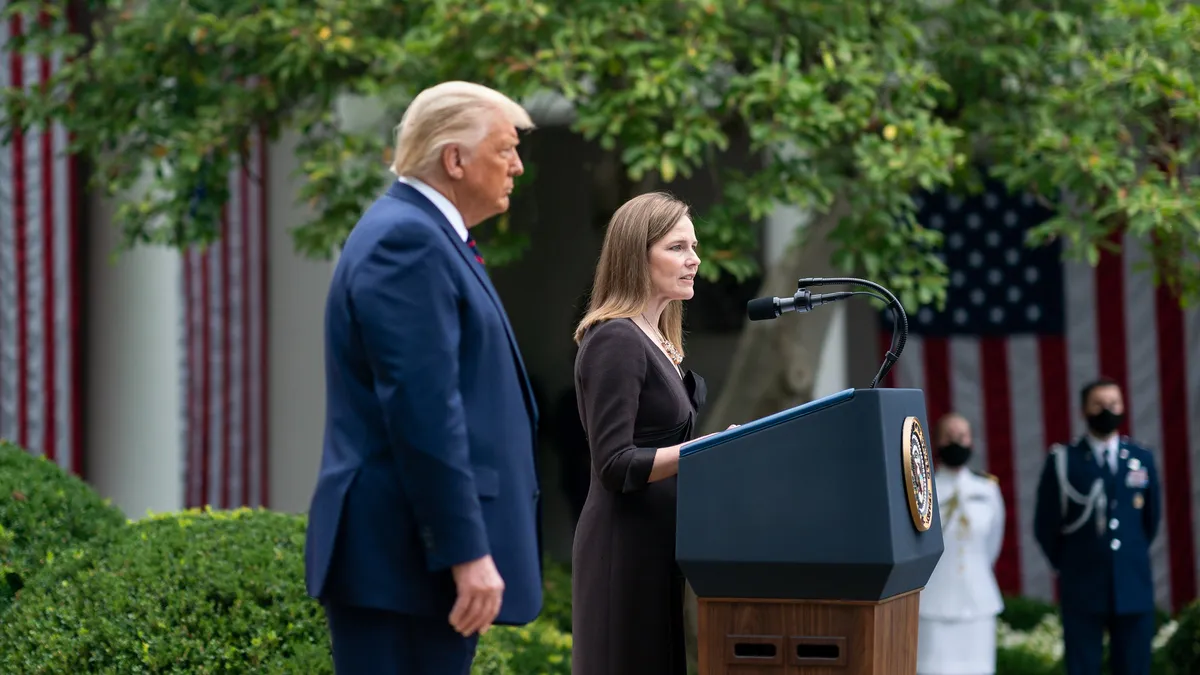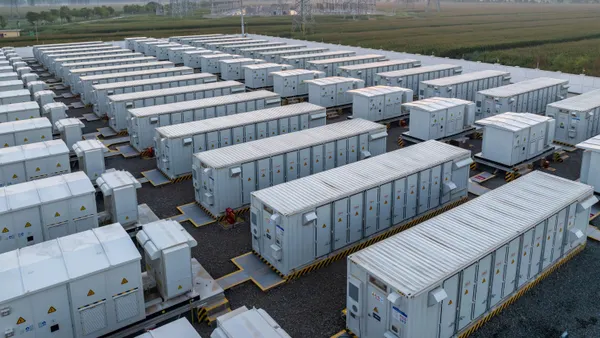The following is a contributed article by Seth Hilton and Jason Johns, partners at Stoel Rives.
Last Monday night, the Senate confirmed Justice Amy Coney Barrett to the United States Supreme Court, cementing a six to three conservative majority on the Court. Justice Barrett, the third of President Trump’s appointees, is expected to shift the Court significantly to the right. The further conservative shift of the Court has significant implications for its future decisions on a number of key energy-related items, absent Democratic actions in Congress to insulate the issues from judicial scrutiny.
Potential climate change impacts
Perhaps the most immediate impact could be in the area of climate change. During her confirmation hearings, then-Judge Barrett stated that she did not believe she was "competent to decide what causes global warming," and that the causes of climate change remain "controversial." Yet the extent of state and federal authority to regulate greenhouse gas emissions and address climate change will likely continue to end up before the Supreme Court.
One of the key decisions concerning the regulation of greenhouse gases is Massachusetts v. EPA. The case was decided in 2007, with four of the conservative justices — Roberts, Scalia, Thomas and Alito — dissenting. The decision established that the EPA had both the authority, and the obligation, to regulate greenhouse gases under the Clean Air Act, providing a basis for the federal government to regulate greenhouse gases, and for the states to challenge the federal government’s failure to take action on impacts from greenhouse gas emissions.
With the swearing in of Justice Barrett on Monday night, however, two of the five justices in the majority in the Massachusetts v. EPA decision — Kennedy and Ginsburg — have now been replaced by more conservative justices appointed by President Trump, significantly increasing the likelihood that the Court may now have a much more limited view of both federal and state rights to regulate around climate change.
Justice Barrett will have an opportunity to address a case involving climate change as soon as this term. Earlier this month, the Supreme Court granted certiorari in BP, P.L.C. v. Mayor & City Council of Baltimore, with Justice Alito abstaining. BP v. Baltimore involves a lawsuit brought by the City of Baltimore against 26 oil and gas companies in Maryland State Court, seeking to hold those companies responsible for the impacts of climate change. The oil and gas companies sought to remove the case to federal court, but the federal district court denied that request, and the Fourth Circuit Court of Appeal affirmed.
While the issues before the Supreme Court are narrowly focused on the scope of review of remand orders, the case could impact whether cases like BP v. Baltimore — and numerous other suits by state and local governments against oil and gas companies related to climate change — will end up in state or federal court. Oil and gas companies defending against this type of litigation typically prefer to litigate in federal court.
FERC and other federal agency jurisdiction
The Court’s further shift right may also have an impact on the Court’s review of the scope of federal agencies’ jurisdiction, including that of the Federal Energy Regulatory Commission (FERC). Generally, conservative courts have held a narrow view of the scope of agency jurisdiction and may be more willing to reverse agency decisions.
Among the issues that may end up before the Supreme Court in the near future is FERC’s jurisdiction over wholesale power contracts in the context of a utility bankruptcy. For example, in Pacific Gas and Electric’s (PG&E) recent bankruptcy, FERC held in two declaratory orders that a Chapter 11 debtor, such as PG&E, cannot cease performing its wholesale power contract without the consent of both the bankruptcy court and FERC. Not surprisingly, the United States Bankruptcy Court of the Northern District of California reached the opposite conclusion, finding that it had exclusive jurisdiction over that issue. An appeal to the Ninth Circuit on that issue was dismissed this month as moot, in light of the bankruptcy court’s confirmation of PG&E’s reorganization plan that assumed all the wholesale purchase contracts at issue. However, this issue has arisen in several other bankruptcies, including in the context of the Natural Gas Act, and may end up before the Supreme Court.
Another potential issue is the boundaries between state and federal jurisdiction under the Federal Power Act. This issue ended up before the United States Supreme Court in 2016 in FERC v. Electric Power Supply Ass’n, with the Supreme Court upholding FERC’s demand response rule, holding that it did not improperly intrude on state jurisdiction over the sale of retail electricity. Chief Justice Roberts joined with the four more liberal justices, including Kennedy and Ginsburg, in an opinion by Justice Kagan, while Justice Scalia filed a dissenting opinion, joined by Justice Thomas. Justice Alito abstained. And, over the last 12 months, FERC has continued to explore the expansive boundaries of federal jurisdiction with its orders affecting energy markets in New York and PJM, and also with its more recent Order No. 2222 that addresses distributed generation.
Similarly, a challenge to FERC’s Order No. 841 on energy storage has been winding its way through the courts, on the grounds that it intrudes on matters left to the states under the Federal Power Act. On July 10, the Court of Appeals for the D.C. Circuit issued an opinion rejecting a challenge to Order No. 841, finding that FERC did not exceed its jurisdiction under the Federal Power Act.
Some of these actions by FERC to test the boundaries between the states and federal regulatory jurisdiction have received a significant negative response from the industry as well as multiple levels of government, and may very well end up before the Supreme Court. As with the decision in Massachusetts v. EPA, the majority that formed in the FERC v. Electric Power Supply Ass’n decision now has two fewer members, potentially causing the Supreme Court to look differently at the scope of the federal government’s authority. And in the end, although the regulators who guided these decisions may move on, their policies may continue to find support in this reformed Court.






















